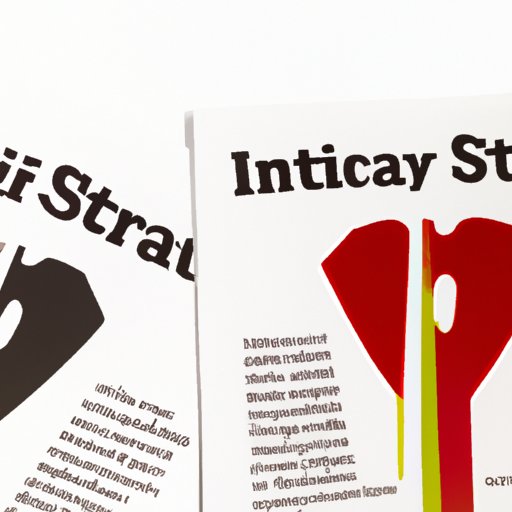I. Introduction
Heart disease is a prevalent condition affecting millions of people worldwide. In fact, it is the leading cause of death globally. In this article, we will explore what heart disease is, its causes, symptoms, and treatment options, as well as prevention strategies and recovery tips for those living with the disease. This article is intended for anyone who wants to understand heart disease better and take steps to reduce their risk or manage the condition.
II. Understanding Heart Disease: A Comprehensive Guide
Heart disease is a term used to describe any condition that affects the heart’s function. That is, any condition that affects the heart’s ability to pump blood effectively through the circulatory system. The different types of heart disease include coronary artery disease, heart rhythm disorders, heart valve disease, and congenital heart disease.
A healthy heart comprises four chambers and four valves, which work together to pump blood throughout the body. Blood brings oxygen and nutrients to the body’s tissues and organs and carries waste products away. The heart muscle, also known as the myocardium, needs a steady blood supply to function correctly.
III. Heart Disease: Causes, Symptoms, and Treatment Options
Heart disease is caused by various factors, including lifestyle choices like smoking, lack of physical activity, unhealthy diets, and underlying medical conditions like high blood pressure, diabetes, and high cholesterol. Having a family history of heart disease or a preexisting heart condition can also increase one’s risk.
The symptoms of heart disease depend on the type and severity of the condition. Some common symptoms include chest pain or discomfort, shortness of breath, fatigue, irregular heartbeat, dizziness or lightheadedness, and swelling of the legs or feet.
Diagnosis of heart disease typically involves a thorough medical history, physical examination, and various tests like an electrocardiogram (ECG), echocardiogram, stress test, or coronary angiogram. Treatment options include lifestyle changes like adopting a heart-healthy diet, quitting smoking, and exercising regularly, as well as medication or surgical interventions like angioplasty, stenting, or heart bypass surgery.

IV. The Silent Killer: Exploring the Risks and Consequences of Heart Disease
Heart disease is often called the “silent killer” because it can develop silently over time, and its symptoms may not appear until it’s too late. Left untreated, heart disease can lead to heart attack, stroke, heart failure, and even death.
Other risks and consequences of heart disease include reduced quality of life, increased healthcare costs, lost productivity, and other complications like kidney disease, peripheral artery disease, or aneurysms.
V. From Prevention to Recovery: Managing Heart Disease with Lifestyle Changes
Prevention is crucial to reduce the risk of heart disease and improve heart health. Some healthy lifestyle changes include eating a heart-healthy diet rich in fruits, vegetables, whole grains, and lean proteins, maintaining a healthy weight, and avoiding or quitting smoking. Regular physical activity is also essential, as it helps reduce blood pressure and cholesterol levels, improves circulation, and strengthens the heart muscle.
For those living with heart disease, recovery and rehabilitation are essential to manage the condition effectively. This involves working with healthcare professionals to develop a personalized treatment plan, incorporating lifestyle changes, medication, and/or surgical interventions as needed. Cardiac rehabilitation programs can also be beneficial, providing exercise training, education, and emotional support to improve quality of life and reduce the risk of future heart events.
VI. Breaking Down the Myths and Misconceptions of Heart Disease
There are many myths and misconceptions about heart disease that can affect how people perceive and manage the condition. One common myth is that heart disease only affects older adults, but it can occur at any age. Some people also believe that heart disease is a man’s disease, but it affects women just as much.
Another misconception is that heart disease is inevitable and cannot be prevented, but many risk factors are modifiable through lifestyle changes or medical interventions. Similarly, some people may think that heart disease treatments always involve surgery or medication, but lifestyle changes can significantly improve heart health and reduce the need for invasive interventions.
VII. Living with Heart Disease: Insights and Advice from Medical Professionals
Living with heart disease can be challenging, but it is possible to manage the condition effectively with the right support and resources. Healthcare professionals, including cardiologists, nurses, and dietitians, can provide valuable insights and advice on managing the disease. Strategies for living with heart disease include managing stress, prioritizing self-care, communicating effectively with healthcare providers, and setting realistic goals for recovery and rehabilitation.
VIII. The Economic Impact of Heart Disease and How to Reduce Its Burden
Heart disease not only affects individuals and families but also has a significant economic impact on society. Healthcare costs for heart disease are high, and lost productivity due to disability or premature death can also be significant. However, interventions like prevention strategies and improved treatment options can help reduce the economic burden of heart disease.
IX. Conclusion
In conclusion, heart disease is a prevalent condition that can have serious consequences if left untreated. However, understanding the different types and causes of heart disease, its symptoms, and treatment options can help individuals take steps to reduce their risk or manage the condition effectively. Healthy lifestyle changes, including diet, exercise, and stress management, can significantly improve heart health and prevent future heart events. By working with healthcare professionals and adopting prevention and management strategies, individuals can live well with heart disease and reduce its impact on their lives and communities.
